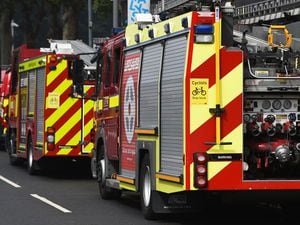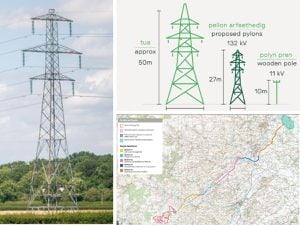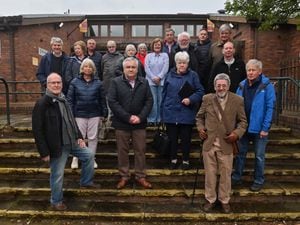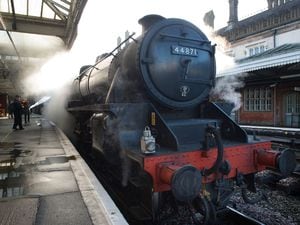Horror beyond imagination: Shropshire remembers the Holocaust
It is almost impossible to imagine what happened here, writes Peter Rhodes.
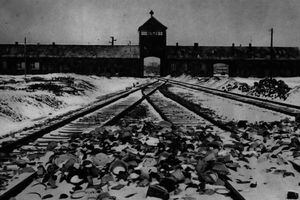
Just as the battlefields of the world wars have been tamed, soothed, ploughed and restored to gentle meadows, so the red-brick barracks at Auschwitz have been tidied and tended over the past seven decades.
Today, it is a huge tourist attraction. Bright-coloured coaches manoeuvre into parking places and disgorge laughing parties of unruly Euro-kids between the neat blocks.
Some head straight for that world-famous sign over the main gate declaring "Arbeit Macht Frei", (work will set you free) to take their selfies at the gates of Auschwitz.
Seventy years after the Red Army's tanks roared into the world's most infamous death camp, it is hard to imagine how the place looked, sounded and smelt on the day of liberation.
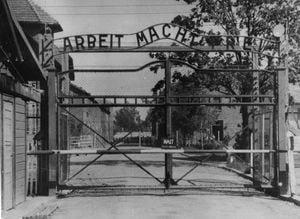
It is even harder for kids raised in the affluent, ignorant West to know how it feels when the freedoms and human rights you take for granted are snuffed out overnight and you become a prisoner on a train on the way to a gas chamber.
When the Holocaust Education Trust began its work of explaining to a new generation how the destruction of European Jewry was carried out, some schoolchildren asked what provision was made for the pets owned by deported families. Others inquired, in all seriousness, whether the Nazis provided counselling.
The gulf between 1945 and 2015, in terms of years, attitudes and expectations, is almost too wide to see across, too deep to plumb.
The kids on day trips to Auschwitz show little horror as the Polish guide goes through her routine daily presentation: See? This is the execution wall. And this is the room where women prisoners were forced to undress. This is the spot where they kneeled to take the pistol shot to the head.

But it's hard to grasp it. Auschwitz simply doesn't feel evil. If the smart brick blocks were in Docklands, they would be chic little apartments. Auschwitz's office buildings have the cosy, echoing feel of an old town hall or college. Even the concrete posts, curved at the top to prevent escape, and the black barbed wire and high-voltage cables seem more like a film set than reality.
And then as you enter the first building, it hits you like a sledgehammer. Here, in the midst of normality, lies an unspeakable obscenity.
Behind a glass wall is a tumbling, brown-grey mass. It is two tons of human hair, shorn from the heads of Jewish women.
Scientists say this hair still bears traces of Zyklon B gas from the chambers where on some days thousands of Jews were gassed. Between 1940 and 1945 about a million Jews, political prisoners, Soviet PoWs and others were killed in this complex of camps.
Some were deceived to the last. See, says the guide. Here are their rail tickets to a new life. They believed they were being resettled. Dozens of suitcases are neatly packed with possessions and marked with their names: "L Grootkerk, 11.10.05 Holland. Maria Kafka, Pietr Eislet, Jacob Greilsamov."
Another pile, this time of shoes, sorted for recycling before their owners were even killed. Smart ladies' shoes. Tiny little shoes like your own child's first pair. At this moment the Holocaust becomes real.
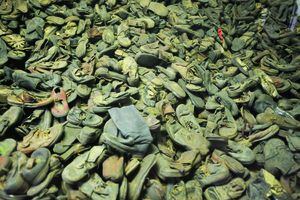
It helps, of course, if you have actually spoken to someone who was here. I had that privilege nearly 30 years ago when I met Chris Portway, a distinguished travel writer. A corporal in the Dorsetshire Regiment, he was captured in the 1944 Normandy campaign and force-marched from camp to camp as the Allies advanced and their German captors retreated. Finally, the PoWs arrived at Auschwitz where they became the only British eyewitnesses to the final acts of the Holocaust.
In the winter of 1944-45, Corporal Portway and his comrades saw a series of mass executions at the camp.
He told me: "They brought them out in batches of 50. They were hardly people by that time, just scraps of humanity. They didn't run or complain and they were just machine-gunned where they stood. And today some people say it never happened. Makes you sick, doesn't it?"
Appalling though they were, the killings witnessed by the British PoWs were just the final, small-scale atrocities of a camp which had been built to kill people on an industrial scale. Auschwitz and the adjoining death camp Birkenau was the Nazis' ultimate killing machine.
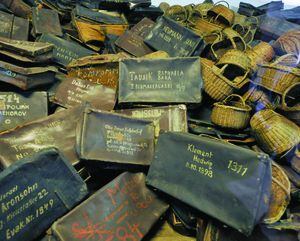
At Birkenau, with industrial efficiency, the trains arrived and disgorged their blinking, bewildered cargo. SS doctors divided them into two groups.
The old, infirm and mothers with children were walked off to the big building with a chimney where they were promised showers. Some must have guessed the worst but hid it from their loved ones to the very moment when the Zyklon B crystals were tipped into the gas chamber. Some took 20 minutes to die.
The others, judged fit for work, were led to another building. As a bitter night fell slowly on Silesia, I walked with a day-trip excursion of British teenagers through the rooms where people, just like them and their own parents, were stripped, searched, shaven of all body hair and tattooed before being interned in wooden barracks like massive poultry sheds. Every day brought forced labour, or a bullet to the head for those judged unfit for work.
The desire to stay alive at all costs did terrible things to decent men and women. Leon Jessel who escaped from Germany to Britain in 1939 and became a successful businessman in Walsall was incarcerated in Buchenwald concentration camp in 1938.
Nearly 60 years after his ordeal he told me frankly: "After three days you were no longer a human being. They built a gallows and hanged two lads who had killed a guard. To my eternal shame, I chewed a piece of bread as I watched. By then I had eaten the leather flap of my briefcase.
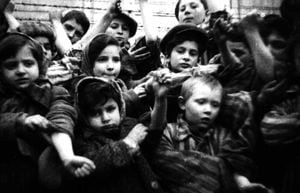
"Some were shot. Most were beaten to death, usually kicked between the abdomen and knees. I had a lot of courage before I went to Buchenwald. Afterwards, none. I have seen men beating other men to death and getting sexual excitement out of it. I mean, all the way. Foaming at the mouth."
Adolf Hitler's hatred of the Jews went beyond mere racism. It was part of a tradition of anti-Semitism dating back more than 1,000 years and which, to our shame, can still be found in Europe.
In the wake of the Charlie Hebdo massacre in Paris, thousands of French Jews are planning to flee the country. Some British Jews say they, too, feel unsafe. Hitler's anti-Semitism was founded in the Church's medieval hatred of the Jews as Christ's killers. In 1930s Germany it was reinforced by the belief, common after 1918, that German soldiers had not been defeated on the battlefields of the Great War but betrayed by a global conspiracy of Jews and Communists. All this was paranoid bunkum. But in defeated, bankrupt Germany it took root and led directly to the gas chambers whose foundations at Auschwitz remain, to be inspected every day by thousands of tourists.
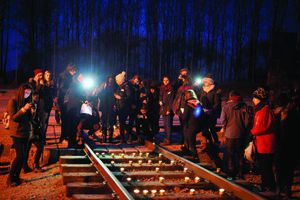
On this 70th anniversary of the liberation of Auschwitz-Birkenau, pundits will be drawing all sorts of conclusions, warnings and modern parallels from the Holocaust. I have seen it invoked in debates about everything from homophobia to school bullying and traveller encampments. But the simplest lessons are sometimes the best. Never forget that Adolf Hitler laid out his Final Solution of the Jewish Problem in his book, Mein Kampf, in 1925. He gave the world 14 years' notice and the world pretended it wasn't happening.
So one sensible lesson to take from the Holocaust is the simple one voiced by the great Jewish campaigner Simon Wiesenthal: "When someone says he wants to kill you, believe him."
In his comfortable Walsall home, Leon Jessel who died 10 years ago, feared that a second Holocaust could come. Yet he lived in hope. As he put it: "The inhumanity of human beings to human beings knows no frontiers. There is nothing worse than the human species. And yet there must be some good, otherwise humanity would have stopped existing a long, long time ago. There must be more good than evil, mustn't there?"


